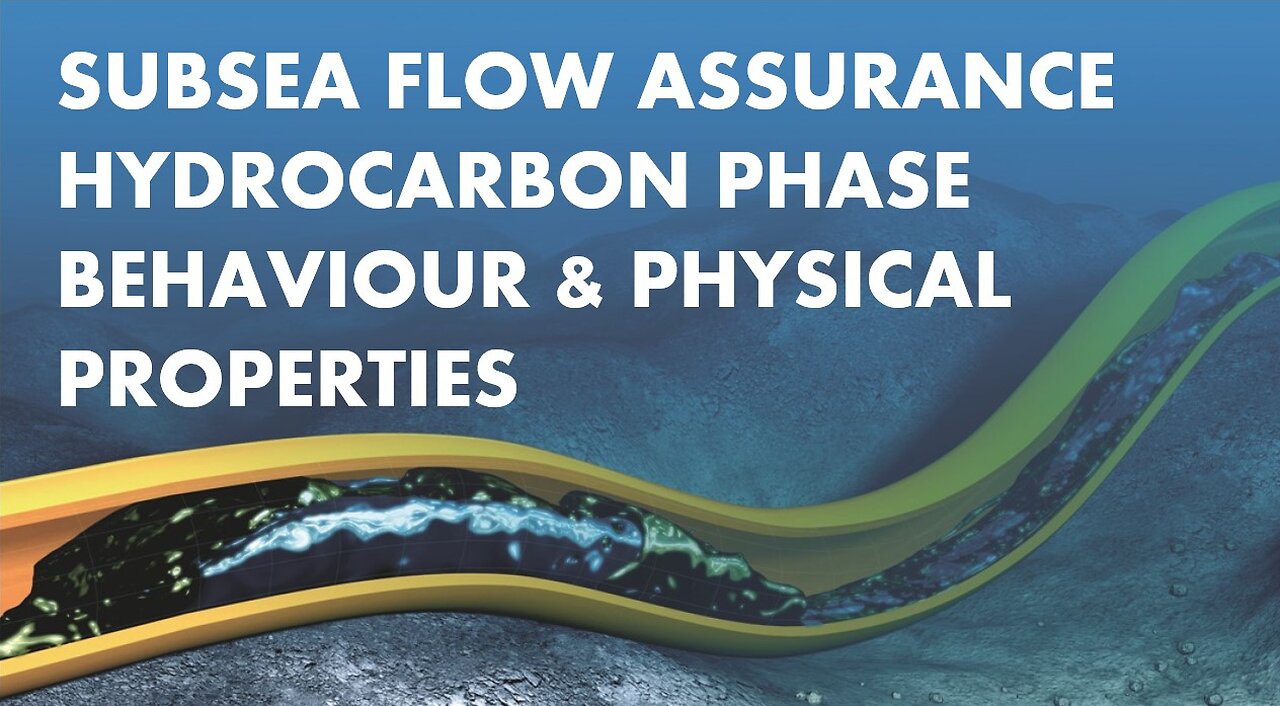Premium Only Content

Subsea Flow Assurance Course Hydrocarbon Phase Behaviour and Physical Properties
A phase is any homogeneous and physically distinct region that is separated from another such region by a distinct boundary. The most relevant phases in the oil industry are liquids (water & oil), gases (or vapors), and to a lesser extent, solids. As the conditions of pressure and temperature vary, the phases in which hydrocarbons exist, and the composition of the phases may change. It is important to understand the initial condition of fluids to be able to calculate surface volumes represented by subsurface hydrocarbons. It is also necessary to be able to predict phase changes as the temperature and pressure vary both in the reservoir and as the fluids pass through the surface facilities, so that the appropriate subsurface and surface development plans can be made. Phase behaviour describes the phase or phases in which a mass of fluid exists at given conditions of pressure, volume and temperature (PVT).
These relationships are frequently shown graphically as phase diagrams. Phase behavior for single component systems are simple but as more components are added to the system, it becomes complex. A brief look at the phase behaviour of single component fluids or pure substances will foster an understanding of more complex systems.
For full videos you can visit this link :
https://drive.google.com/file/d/16O7O_6Ri5AZXY6yQ3SrmRcOT-3IPt9tN/view?usp=sharing
and you will be directed to a google drive link where you can download all files of this course
https://drive.google.com/file/d/1sqoq3FPnBt3_5XCyVDUDxlm5PJ7tjU6e/view?usp=sharing
-
 LIVE
LIVE
The Mel K Show
1 hour agoMORNINGS WITH MEL K - Let it Bleed-Things are Getting Spicy in DC 12-5-25
900 watching -
 LIVE
LIVE
LFA TV
14 hours agoLIVE & BREAKING NEWS! | FRIDAY 12/05/25
3,626 watching -
 1:44:31
1:44:31
Benny Johnson
3 hours agoThe Darkest Cover Up in FBI History: Explosive January 6th Pipe Bomber Evidence Revealed, They LIED…
50.8K43 -
 59:56
59:56
VINCE
4 hours agoThe Boys At The Bureau Got The Bomber | Episode 182 - 12/05/25 VINCE
201K149 -
 38:34
38:34
Rethinking the Dollar
2 hours agoRetail Silver FOMO Starting In Asia (What do they know?) | RTD News Update
22K2 -
 1:36:52
1:36:52
Graham Allen
4 hours agoCandace Owens BACKS DOWN?! It’s Time To Burn All Of This Insanity To The Ground…..
162K804 -
 2:00:56
2:00:56
Matt Kohrs
15 hours agoLive Day Trading, Breaking Market News & Payday Friday || The Matt Kohrs Show
32.5K5 -
 2:00:04
2:00:04
Badlands Media
9 hours agoBadlands Daily - J6 Pipe Bomber Caught(?), Hegseth Exonerated, Drug Boat Blown Up, Texas Map Upheld
42K11 -
 2:59:45
2:59:45
Wendy Bell Radio
8 hours agoRobbing America Blind
76.7K94 -
 1:26:51
1:26:51
The Big Mig™
3 hours agoThe U.S. Will Betray Kiev?
6.67K10